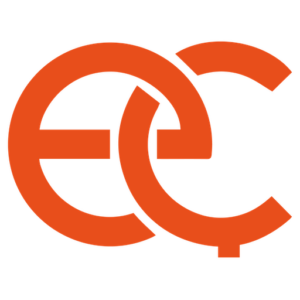A large part of the central nervous system controls vision, and therefore our eyesight may be affected after a stroke (paralysis) with a high probability. Post-stroke visual problems have been referred with an estimated frequency of 65% in the stroke population.
Visual impairment after stroke may be generally categorized into four visual problems: central visual problems, visual field loss, eye movement disorders and visual perception disorders. Visual field loss was reported in up to 52% of stroke patients, central visual problems in up to 70%, eye movement disorders in up to 68% and visual perception disorders (including visual inattention) in up to 80%. In addition, visual problems may also be a precursor to stroke (paralysis) and stroke (paralysis) can be prevented with a rapid evaluation after the emergence of visual problems.
Visual problems that developed after a stroke (paralysis) may be the most disabling condition in a person’s life. Studies summarize many effects, including loss of confidence, fear of independent movement, inability to drive, difficulty reading, social isolation and depression.
Visual Problems
- Central visual impairment problems: defined as reduced visual acuity.
- Eye movement disorders (ocular motility abnormalities): defined as eyeball misalignment, and incomplete eyeball motility. For example, visual paralysis, cranial nerve paralysis, saccadic disorder, smooth pursuit disorder, vergence disorder.
- Visual field loss: defined as loss of part of the central and/or peripheral field of vision, e.g. homonymous hemianopia, quadrantanopia, scotoma.
- Visual perception disorders: defined as impaired perception of visual objects or space, e.g. visual inattention, agnosia, alexia. Maximizing the remained visual function is essential to provide help for the general rehabilitation.
- Visual neglect: Visual neglect often occurs in the setting of right brain stroke (paralysis). These patients are unable to perceive the visual stimuli on the left side or feel the lack of what they cannot perceive. The inability of these patients to pay attention to or ignore a certain area of their environment develops without their own decision. Even if the visual field is not fully restored, recovery is possible in most stroke (paralysis) patients.
Visual rehabilitation can enhance this recovery, enable the person to perform daily activities more comfortably and increase self-confidence. Maximizing the remained visual function is essential to provide help for the general rehabilitation.
5 Symptoms of Bubble Formation in Brain – Brain Aneurysm
Bubble Formation in Brain– brain aneurysm is a serious, potentially life-threatening health problem which occurs when a weak spot in one of the blood vessels in the brain balloons and fills with blood.
Bubble formation in brain aneurysm may remain unrecognized until it bursts and cause a medical emergency. Recognizing the symptoms of a brain aneurysm is vital for early diagnosis and medical intervention. In this article, we will tackle with the five symptoms which may indicate a brain aneurysm.
Bubble Formation in Brain and Severe Headache
One of the most common symptoms of a brain aneurysm is a severe headache. Described by some individuals as the worst headache they have ever experienced, this ache comes on suddenly and severely.
This is generally different from normal headaches and accompanied by other symptoms such as nausea, vomiting and photosensitivity. If you or someone close to you is experiencing a sudden and intolerable headache, it has become a must to seek medical attention.
Bubble Formation in Brain and Visual Problems
Bubble formation in brain may affect vision. Blurred or double vision, difficulty in focus and other visual disturbances may occur as a result of the aneurysm’s pressing on nerves in the brain or surrounding structures.
These symptoms should not be ignored especially if they are sudden and unexplainable. Regular eye checks may help to identify possible problems with the optic nerve and detect an underlying aneurysm.
Neck Pain and Neck Stiffness
In some cases, the aneurysm may cause neck pain and neck stiffness. This may be due to the pressure of the ballooned blood vessel on the surrounding nerves and tissues.
It is important to consult health professionals especially when it is accompanied by the other symptoms in this article.
Speech Disorders and Cognitive Impairments
A ruptured aneurysm may affect cognitive functions and speech. Difficulty in speaking, slurred speech and comprehension problems may ensue. These symptoms may be the indicatives of an aneurysm which affects the areas of the brain that is responsible for language and cognitive processes. As these symptoms can progress rapidly if left untreated, it is very important to seek medical advice.
Loss of Consciousness and Seizures
In severe and advanced cases, the erosion and rupture of a brain aneurysm may lead to loss of consciousness or seizures. This is a medical condition that necessitates immediate attention. It is vital to call for emergency medical assistance if someone around you suddenly faints, loses consciousness or has a seizure.
Knowing the symptoms of a brain aneurysm has a vital importance for early diagnosis and intervention. Although these symptoms vary from person to person, sudden and serious changes in vision, speech or consciousness, along with headache should not be ignored.
If you suspect a brain aneurysm, seek medical attention immediately to increase the chance of a positive outcome. Regular health checkups and maintaining a healthy lifestyle can also contribute to your overall health and reduce the risk of developing an aneurysm- bubble formation in the brain.
This article has been prepared and approved by the Medical Editorial Board of İstanbul Rehabilitation Academy.

